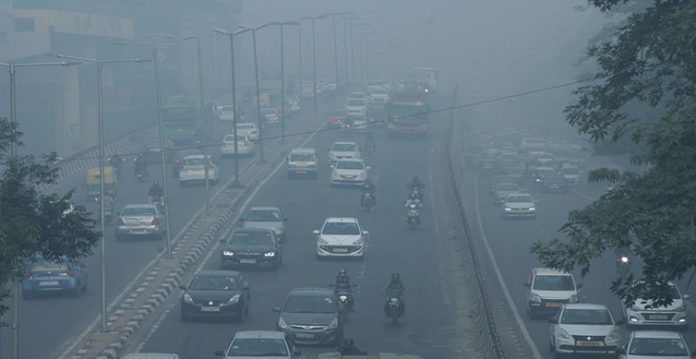While covid-19 continues to be one of the major causes of fatality around the world, India is dealing with another factor that is contributing to the diminishing life expectancy of its population. According to a report by the University of Chicago, around 40 per cent of Indians are likely to bear a reduced life expectancy by over 9 years due to air pollution.
This will affect over 480 million people residing in central, eastern and northern India, the capital New Delhi included. Though the deadly polluted air is not new to Delhiites, the US-based research group’s study lays out the probable years that will be lost by Indians due to air pollution.
Speaking about the extent to which the pollution has spread, the EPIC study said, “Alarmingly, India’s high levels of air pollution have expanded geographically over time.”
Western states are also not spared by it as Maharashtra and Madhya Pradesh too are facing the wrath of air pollution, leading to 2.5-2.9 years reduced in a resident’s life expectancy.
ALSO READ: Delhi sees highest increase of NO2 in air pollution in last 1 year
The results of the Energy Policy Institute’s study were based on the health of people in comparison to their exposure to different levels of long-tern air pollution. These figures were then used to decipher the final results when compared in different places in India and other countries.
If the figures obtained during the research of 2019 do not change, then North Indians are set to lose over 9 years of their life expectancy. The average particulate matter concentration in 2019 in India was 70.3 microgram per cubic meter. This was the highest reported in the world and 7 times more than the rate advised by the World Health Organization (10 μg/m3).
India, Pakistan, Nepal, and Bangladesh contribute to almost a quarter of the total world population and hold positions in the world’s top 5 most polluted countries.
“Due to South Asia’s high population and pollution concentrations, the region accounts for 58 per cent of total life years lost due to particulate pollution exceeding the WHO guideline,” it said.
If attempts are made to reduce air pollution and it does finally align with the WHO guidelines, an average South Asian person would live 5.6 years more than what is expected at the moment.
However, the authors praised India’s efforts that started in 2019 through the National Clean Air Program (NCAP). By “achieving and sustaining” the goals mentioned in the NCAP, India’s total life expectancy will be increased by 1.7 years while that of Delhiites will jump by 3.1 years, the report said.
As part of the NCAP, the program is directing its efforts towards reducing air pollution by 20-30% in 102 of the most polluted cities by the next 3 years. It aims to achieve it by ensuring cuts in industrial emissions and vehicular exhaust, reducing dust pollution, and introducing stringent rules for transport fuels and biomass burning.
Shockingly, New Delhi remained the most polluted capital city in the world for the 3rd consecutive year in 2020. Though 2020’s lockdown impositions allowed Delhiites to breathe in one of the cleanest air they had inhaled in ages, the blessing was short-lived as farm residue burning in Punjab and Haryana made things worse in winter.
Similarly, Bangladesh could increase its average life expectancy by 5.4 years, given it works to ensure air quality gets improved and reaches the WHO’s guidelines.







